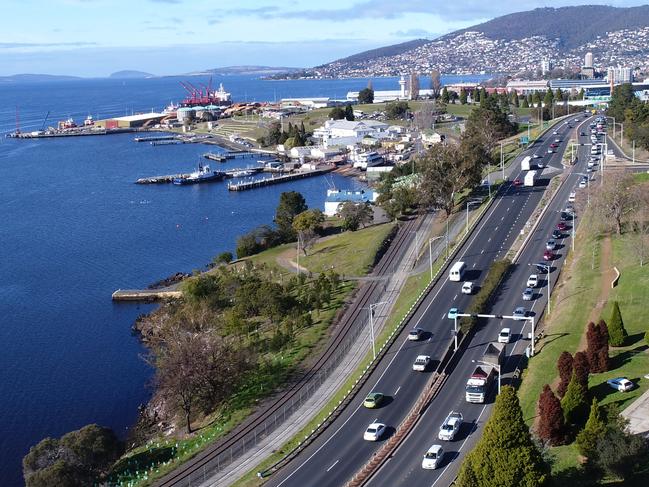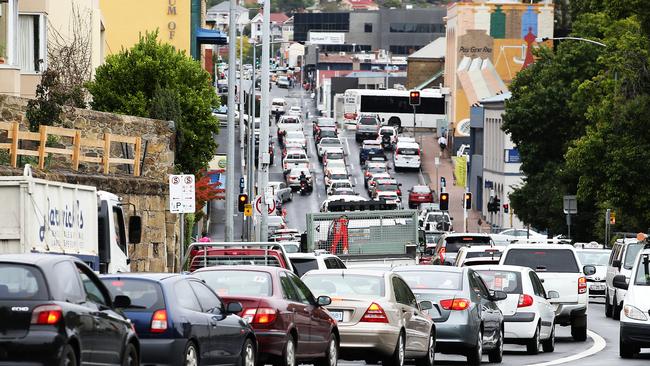Talking Point: Study confirms what we knew and what we should do
Report torpedoes western bypass plans, again, so let’s take action that we know can work, writes John Livermore

Opinion
Don't miss out on the headlines from Opinion. Followed categories will be added to My News.
A $700,000 GHD study has found a western bypass is technically feasible but would cost $3.4bn, require a population of two million people to be viable, and only save motorists two to four minutes’ travel time.
The consultants’ report also considered better connections between Macquarie and Davey streets with the Southern Outlet, Brooker and Tasman highways. It listed two options using tunnels, bridges and interchanges, but concluded the cost would be unfundable by Tasmanian and federal governments.
Infrastructure Minister Michael Ferguson declared the project unfeasible.
The report’s conclusion torpedoes advocacy for a western bypass by Bob Cotgrove and tunnel solution from the Evers Group.
The government already had the information it needed from the RACT’s consultant in its Greater Hobart Mobility Vision, which found a western bypass unviable. The RACT’s Stacey Pennicott focused on public transport incentives, noting government had supported initiatives in the Mobility Vision, which included park-and-ride in Kingston and a Derwent ferry.
A 2008 Department of Energy Infrastructure and Resources report for Hobart City Council found only 14 per cent of Hobart traffic was through-traffic. This was confirmed by the State Growth Traffic Origin Destination Report 2017. It showed that during morning peak, more than three-quarters of journeys that start in the east, north or south of Hobart end in the city. In afternoon peak more than two-thirds that end in the east, north or south began in the city.

State Growth’s Hobart Transport Vision 2018-2030 says: “Constructing more roads alone will not solve the problem. It will simply create more traffic, more inner congestion and reinforce our reliance on the car. Increasing proportion of the population using public transport will reduce traffic congestion across the … road network.”
In 2018 then minister Rene Hidding endorsed investment to bring about this desired result as: investment in a new CBD transit hub; ferry service infrastructure; activating the northern suburbs rail corridor; Davey and Macquarie transit priority measures; and priority on key northern and southern arterial corridors for passenger transport.
A CBD transit hub is yet to be acted on, the ferry is at consultation stage but with no indication from government of Bob Clifford’s input regarding supporting infrastructure, and Davey and Macquarie measures are operating after a state government-Hobart City Council tussle. Despite Rene Hidding’s conversion in 2018 to light rail, nothing on a northern rail corridor has been heard. Northern and southern arterial corridors involve a bus lane on the Southern Outlet, which at $68m would be open to axe with the state budget under constraint post-virus.
In 2005, the RACT proposed park-and-ride from Kingston, which now could include Sorell and New Norfolk, and is preferable to the Southern Outlet bus lane involving expensive rock drilling.
Congestion on the Brooker has a clear origin. In 2014 TasRail cut the rail freight link between the port of Hobart to Bridgewater to boost the transport interchange there. Toll’s then manager estimated 600,000 tonnes of freight a year would go to the Brooker. Resultant congestion remains.
Bob Cotgrove advocates the car for multi-destination journeys in contrast to the A to B of public transport (Talking Point, August 11). The GHD report found 85 per cent of commuters in private cars made an average journey of under 9km. Government should follow strategies in the Hobart Transport Vision and the RACT’s Mobility Vision.
We have seen vacillation on light rail, years of delay, confused government policies or a sheer lack of them.
John Livermore is editor of Laws of Australia: Transport and fellow of the Chartered Institute of logistics and Transport. His views do not necessarily reflect those of these organisations.


